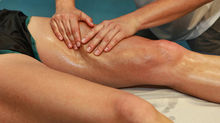Stability vs Mobility, that is the question
- The Studio Team
- Jun 2, 2018
- 3 min read
On so many levels in life we are hankering after stability! You will often hear the terms “core stability”, “pelvic control” thrown around left, right and centre in the health and fitness industry.
From a physio perspective (and personal experience as a hypermobile being), I think the term “core stability” is a tad outdated and also difficult to properly define - core stability will mean different things from one person to the next.
Like most things when looking at the human existence, there is a continuum. To explain the instability/stability spectrum further, let’s look at other living creatures: plants and trees and bring this blog to life!
At one end of the scale when we look at stability, think of the humble seaweed swishing around in the sea, albeit a healthy snack for sea creatures and humans alike, it is evident it needs external support - put it on dry land and it becomes rather lifeless. This is where I put very hypermobile or extremely flexible people who lack the strength to hold themselves up against the Earths’ gravity. People with conditions such as Elher’s Dandros Syndrome (connective tissue disorder resulting in multiple areas of hypermobilty amongst other symptoms) are rare, but when we meet them, they are a worthy challenge to work. Patients such as these often have multiple sites of pain due to weak muscles forced to work in overdrive to make up for insufficient primary joint restraint (ligaments) and areas of joint stiffness and compression often a compensatory response to an adjacent hypermobile area. These folk need lots of continuous work to strengthen their secondary stabilisers (the muscles) and promote postural control, this process often a requirement ongoing in the prevention of flare ups and maintenance of a happy pain free life.
Looking at the other end of the scale a Gum tree - strong and tall, perfect shade for a crazy Sydney sizzler of a day. This idea of stability is not great either, people are not meant to be too rigid. The issue with Gum trees is that they are too stiff and when those Westerly’s come through, these trees often blow over, all their branches strewn around. These kind of bodies can be found dotted in labour intensive jobs or in sedentary desk positions. Instead of using efficient core muscles, these bods fix at certain points in their back or neck, loading repeatedly in the same spots. Over time, this can lead to irritation of healthy tissues, causing pain and decreased range of movement. The good news is, if correctly managed these people bounce back relatively quick.
So where should our bodies ideally be? This is where I would look towards the perfect Palm tree! The Palm combines the optimum balance of strength and stability, allowing them to withstand tropical storms as they adapt, bending and moving with external forces. The spine is made up of a series of joints that’s are supported and reinforced by flexible ligaments and muscle to create a beautiful assortment of movements in a controlled range that your body feels comfortable to allow. Another way of describing this would be dynamic stability. This is our goal as physiotherapists and Pilates instructors to optimise strength and stability simultaneously.
Where do you think you fit in? If you want keep your body calm and stable in the storm we call life give us a call!






























Comments